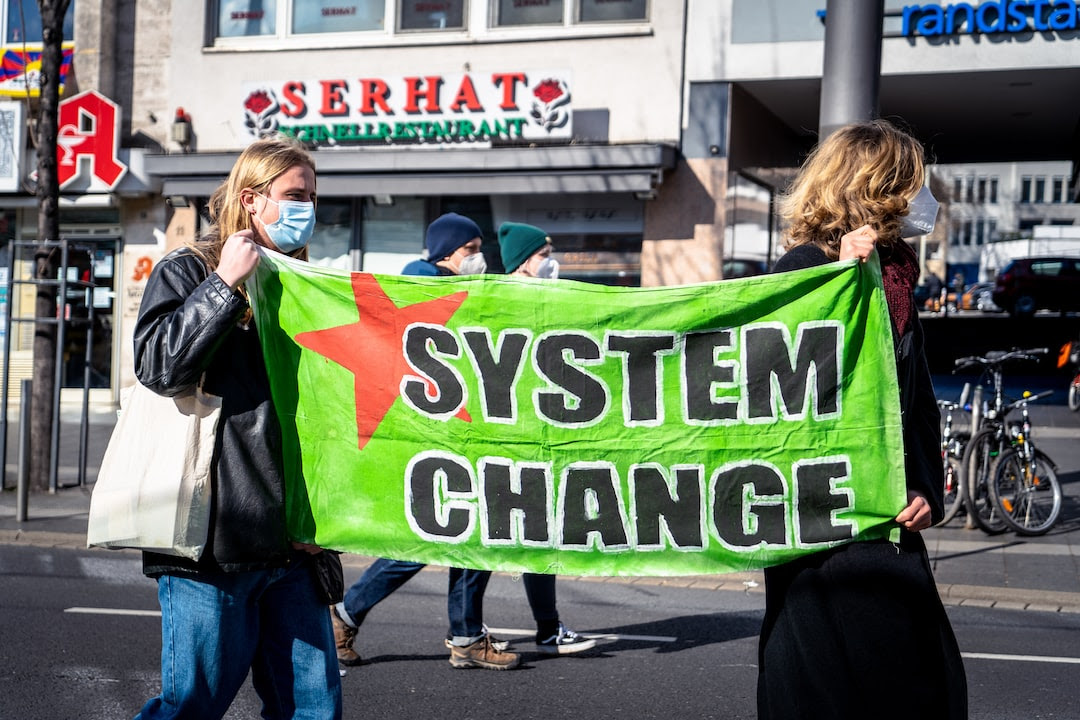May 18, 2023
Why ‘System Transformation’ Is Likely A Pipe Dream
An item from a neo-liberal… This one is an item from a business professor with little direct experience in education, but who believes free market economic principles are the answer to education’s (and pretty much all other society’s social) problems.
Open in app or online
Photo by Mika Baumeister on Unsplash I can’t count the number of times people at an education conference have approached me and said something to the effect of, “But how do we transform the education system?” or “We need to focus on system transformation” or “How do we scale system transformation?”
I get why they share these sentiments with me. Ever since I wrote Disrupting Class in 2008, I’ve been publicly in favor of transforming education, not merely reforming it (although I do work in both spheres). But when I hear calls about transforming existing systems, I recoil a bit and grow suspicious. There are many reasons for my reaction.
Foremost among them is this: Despite all the fancy models and white papers around what are all the levers to pull in order to transform a system, system transformation almost never happens by changing the fundamental tenets of the system itself. Instead, it comes from replacing the system with a brand-new system.
To start to understand why, consider the complicated system in which public schools find themselves. As Thomas Arnett explained, they are one part of a vast value network of federal, state, and local regulators, voters and taxpayers, parents and students, teachers, administrators, unions, curriculum providers, school vendors, public infrastructure, higher education institutions, and more.
A value network is the context within which an organization establishes its processes, priorities, and cost structure to respond sustainably to its stakeholders’ desires for progress.
The reason transforming an existing system is so hard is that at each of the nodes of connection, the different actors’ organizational and business models, economic incentives, interests, rhythms of innovation, technological paradigms, and more are both consistent and mutually reinforcing. New ideas, programs, or entities that don’t fit into these processes, priorities, and cost structures are simply not plug-compatible into that value network. They consequently get rejected, tossed to the fringe, or altered to meet the needs of the existing actors in the value network.
LIKE
COMMENT
RESTACK
© 2023 Michael Horn
No comments yet.
RSS feed for comments on this post. TrackBack URI
- SEO Powered Content & PR Distribution. Get Amplified Today.
- PlatoAiStream. Web3 Data Intelligence. Knowledge Amplified. Access Here.
- Minting the Future w Adryenn Ashley. Access Here.
- Buy and Sell Shares in PRE-IPO Companies with PREIPO®. Access Here.
- Source: https://virtualschooling.wordpress.com/2023/05/18/why-system-transformation-is-likely-a-pipe-dream/
- :is
- :not
- 11
- 20
- 2023
- 40
- 8
- a
- About
- actors
- administrators
- All
- altered
- Although
- among
- an
- and
- answer
- ARE
- around
- At
- auto
- banner
- been
- begin
- believes
- Bit
- Black
- both
- business
- but
- by
- Calls
- Category
- Center
- changing
- clear
- comes
- comment
- comments
- complicated
- Conference
- connection
- Consequently
- Consider
- consistent
- context
- Cost
- Curriculum
- data
- Despite
- different
- direct
- do
- Dont
- dream
- each
- Economic
- Education
- effect
- end
- entities
- establishes
- Ether (ETH)
- EVER
- existing
- existing system
- experience
- favor
- Federal
- feedback
- Find
- fit
- Focus
- For
- Free
- from
- fundamental
- get
- good
- Green
- Grow
- happens
- Hard
- Have
- hear
- higher
- Higher education
- holding
- How
- HTTPS
- i
- ideas
- identifier
- in
- Incentives
- Infrastructure
- Innovation
- instead
- institutions
- interests
- into
- IT
- ITS
- itself
- left
- likely
- little
- local
- many
- Market
- Meet
- merely
- Meta
- Michael
- models
- more
- much
- mutually
- my
- Need
- needs
- network
- never
- New
- nodes
- number
- of
- on
- ONE
- or
- order
- organization
- organizational
- Other
- papers
- parents
- part
- People
- pipe
- plato
- Plato Data Intelligence
- PlatoData
- Post
- presentation
- pretty
- principles
- problems
- processes
- Professor
- Programs
- Progress
- providers
- public
- publicly
- reaction
- really
- reason
- reasons
- Recoil
- reduce
- Regulators
- resource
- Respond
- right
- Said
- Scale
- School
- Schools
- Share
- Simple
- simply
- since
- site
- So
- Social
- something
- spam
- start
- State
- structure
- Students
- suspicious
- syndication
- system
- Systems
- TAG
- taxpayers
- teachers
- technological
- tenets
- that
- The
- Them
- themselves
- There.
- These
- they
- this
- times
- to
- tossed
- Transform
- Transformation
- transforming
- under
- understand
- Unions
- Unsplash
- value
- Vast
- vendors
- voters
- we
- What
- when
- which
- white
- WHO
- why
- with
- within
- woman
- WordPress
- Work
- yet
- Your
- zephyrnet














